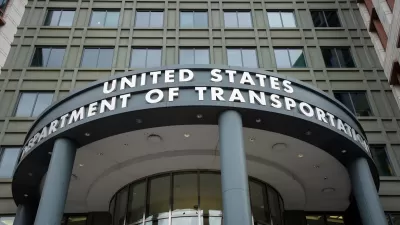Philadelphia is providing a living case study of the tenants of the Donald Shoup-approach to parking.
Jon Geeting reports on a parking inventory of Center City Philadelphia released recently by the city's Planning Commission. The inventory produces a few findings that reconcile with contemporary thinking about parking, in line with the lessons of Donald Shoup.
The inventory, produced every five years, tracks the effects of a wave of construction in Center City, which reduced the number of off-street public parking spaces by 3,623, or 7.2 percent. Geeting explains the potentially surprising effect of the reduced parking:
"One might guess that losing more than 3,600 parking spaces in a five year span would drive up occupancy rates in the remaining lots and garages, but on the whole this hasn't been the case. Counterintuitively, parking occupancy actually declined by 1.7 percent during this period, from 75.6 percent down to 73.9 percent."
To more explicitly call out the kind of people who doubt the contemporary planning wisdom about parking, Geeting adds this passage later in the article:
"The idea that building more parking capacity will only increase the number of cars in a neighborhood, or conversely, that removing parking spaces can reduce the number of cars often gets short shrift at neighborhood zoning meetings, but the evidence here suggests this is basically how things work."
The article goes into a lot more detail about the inventory's findings, and also ties back to some of the politics of parking in the city—including how it has brought about the city's ongoing lack of dynamic parking pricing.
FULL STORY: Study: Center City lost 7 percent of its public parking spaces in the last five years

Alabama: Trump Terminates Settlements for Black Communities Harmed By Raw Sewage
Trump deemed the landmark civil rights agreement “illegal DEI and environmental justice policy.”

Planetizen Federal Action Tracker
A weekly monitor of how Trump’s orders and actions are impacting planners and planning in America.

The 120 Year Old Tiny Home Villages That Sheltered San Francisco’s Earthquake Refugees
More than a century ago, San Francisco mobilized to house thousands of residents displaced by the 1906 earthquake. Could their strategy offer a model for the present?

In Both Crashes and Crime, Public Transportation is Far Safer than Driving
Contrary to popular assumptions, public transportation has far lower crash and crime rates than automobile travel. For safer communities, improve and encourage transit travel.

Report: Zoning Reforms Should Complement Nashville’s Ambitious Transit Plan
Without reform, restrictive zoning codes will limit the impact of the city’s planned transit expansion and could exclude some of the residents who depend on transit the most.

Judge Orders Release of Frozen IRA, IIJA Funding
The decision is a victory for environmental groups who charged that freezing funds for critical infrastructure and disaster response programs caused “real and irreparable harm” to communities.
Urban Design for Planners 1: Software Tools
This six-course series explores essential urban design concepts using open source software and equips planners with the tools they need to participate fully in the urban design process.
Planning for Universal Design
Learn the tools for implementing Universal Design in planning regulations.
Clanton & Associates, Inc.
Jessamine County Fiscal Court
Institute for Housing and Urban Development Studies (IHS)
City of Grandview
Harvard GSD Executive Education
Toledo-Lucas County Plan Commissions
Salt Lake City
NYU Wagner Graduate School of Public Service





























